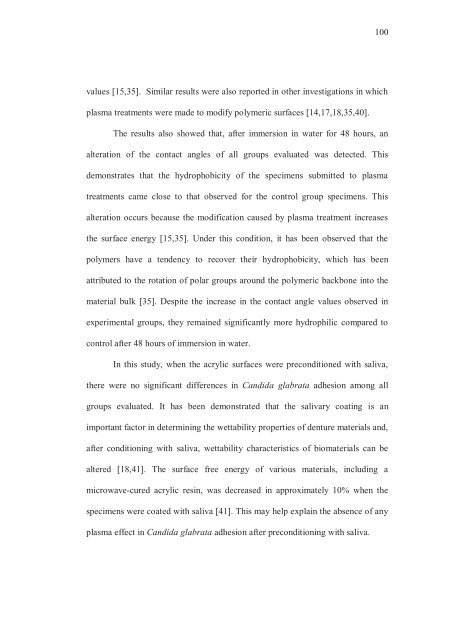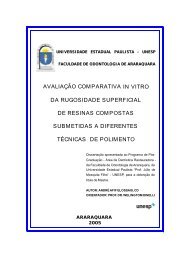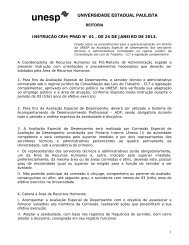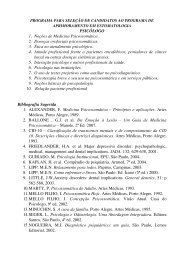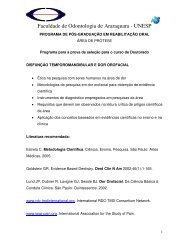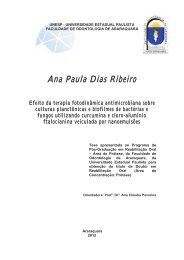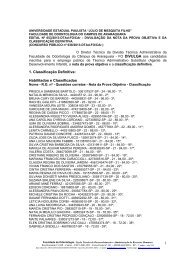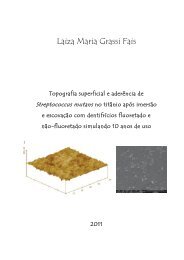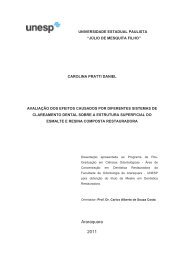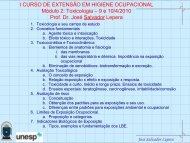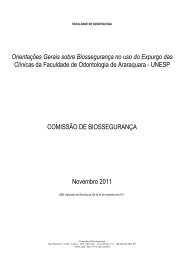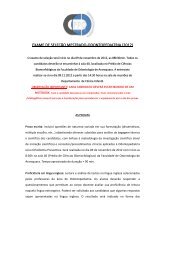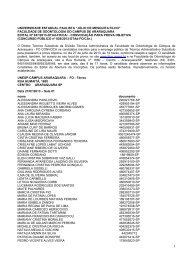universidade de são paulo - Faculdade de Odontologia - Unesp
universidade de são paulo - Faculdade de Odontologia - Unesp
universidade de são paulo - Faculdade de Odontologia - Unesp
Create successful ePaper yourself
Turn your PDF publications into a flip-book with our unique Google optimized e-Paper software.
100<br />
values [15,35]. Similar results were also reported in other investigations in which<br />
plasma treatments were ma<strong>de</strong> to modify polymeric surfaces [14,17,18,35,40].<br />
The results also showed that, after immersion in water for 48 hours, an<br />
alteration of the contact angles of all groups evaluated was <strong>de</strong>tected. This<br />
<strong>de</strong>monstrates that the hydrophobicity of the specimens submitted to plasma<br />
treatments came close to that observed for the control group specimens. This<br />
alteration occurs because the modification caused by plasma treatment increases<br />
the surface energy [15,35]. Un<strong>de</strong>r this condition, it has been observed that the<br />
polymers have a ten<strong>de</strong>ncy to recover their hydrophobicity, which has been<br />
attributed to the rotation of polar groups around the polymeric backbone into the<br />
material bulk [35]. Despite the increase in the contact angle values observed in<br />
experimental groups, they remained significantly more hydrophilic compared to<br />
control after 48 hours of immersion in water.<br />
In this study, when the acrylic surfaces were preconditioned with saliva,<br />
there were no significant differences in Candida glabrata adhesion among all<br />
groups evaluated. It has been <strong>de</strong>monstrated that the salivary coating is an<br />
important factor in <strong>de</strong>termining the wettability properties of <strong>de</strong>nture materials and,<br />
after conditioning with saliva, wettability characteristics of biomaterials can be<br />
altered [18,41]. The surface free energy of various materials, including a<br />
microwave-cured acrylic resin, was <strong>de</strong>creased in approximately 10% when the<br />
specimens were coated with saliva [41]. This may help explain the absence of any<br />
plasma effect in Candida glabrata adhesion after preconditioning with saliva.


